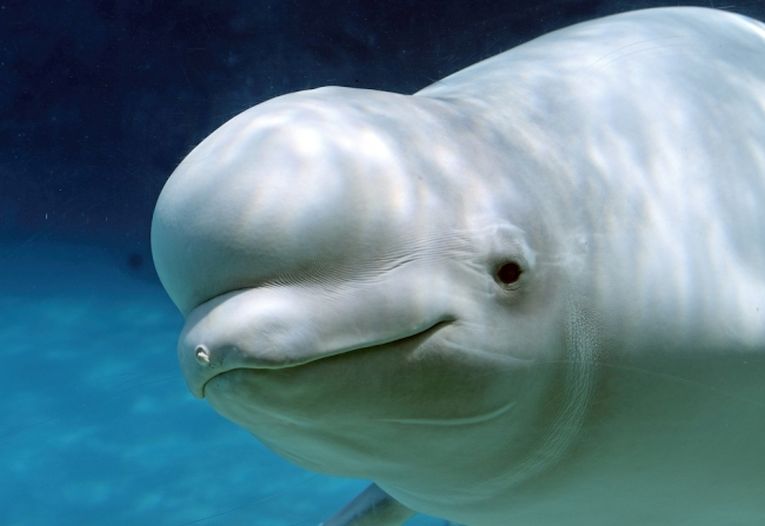It takes a lot to get any Canadian government to consider the climate or the biodiverse habitats we need if we’re going to survive. However a certain population are having a whale of a time in the St Lawrence River and its associated estuarine bits and pieces. The beluga, Delphinapterus leucas, is a close relative of the almost mythical narwhal and is also near-threatened worldwide, with only 150,000 spread around the Arctic. Canadian populations in Ungava Bay and the east of Hudson Bay are classed by the government as endangered.
The sea canary
(because it twitters a lot---) uses the St Lawrence as a summer breeding ground, safe for young calves, after their winters around the pole. The river also has a permanent population who obviously prefer slightly warmer temperatures and the current rich biodiversity that provides belugas with fish, Crustacea and other invertebrates. Cacouna in Quebec, on the east coast of the river, was to be a marine terminal for loading oil carriers. COSEWIC, a Canadian conservation group noted the endangered status of the beluga in Canada and noted out that the remaining 900 resident in the St. Lawrence (down from 5000 in 1900), plus the migrants would need a lot of consideration by Transcanada ( of Keystone XL fame) and Energy East, who are the contractors concerned.
The relief for those opposed to tar sand extraction, including the Keystone XL protestors, is evident. To prevent the carriage of 1.1 million barrels of such crude across Canada (from Alberta) would exceed even Keystone XL’s ambition. The creation of greenhouse gas emissions would be immense, too, as the oily tar would be used for energising power stations and produce some pretty dirty waste.
First Nations groups naturally object to the oil terminal infringing their rights and reducing their hunting, although that does include a specified number of belugas! The states of Quebec and Ontario also have severe demands that will possibly prevent all progress on this extensive project. Pollution in this giant seaway has plagued human and wildlife health problems for many years. Cancer, frequent pneumonia, hepatitis and abscesses in the beluga can be mirrored in the local human settlements, especially if fish are consumed in large amounts. Fertilizers cause toxic algal blooms, while any whale is going to be distressed by the noise of the extensive marine traffic. The report emanates from Climate Progress.in this edition of their publication. We have lotsa belugas and narwhals in this article ! Just take a look at those narwhal tusks
!!!










